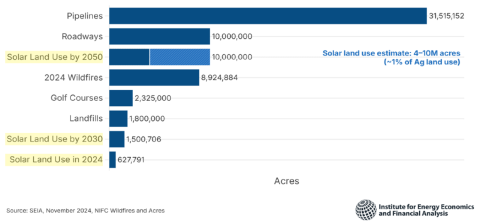Guyana's oil deal: promise of quick cash will leave country shortchanged
Download Full Report
Key Findings
Although Guyana will receive revenue each year, it will incur large expenses to generate that revenue. These large expenses, owed to oil and gas companies must be reimbursed before the country enjoys any long-term benefits.
Low prices and market oversupply for the foreseeable future, and the high cost of developing Liza and Payara and the other fields, cloud Guyana’s expectation of future abundance.
New, long-term global market and political forces have created a permanent oversupply of oil and gas, low prices and new competitors that will keep markets unstable and partners like ExxonMobil unreliable.
Executive Summary
Over the next five years, revenues from Guyana’s newly discovered oil reserves will be insufficient to cover the country’s deficits, support new spending and build its wealth. New oil revenues will provide Guyana with some choices, but will not generate enough revenue to satisfy all of these needs. Longer term, the declining oil and gas sector faces challenges that will result in it becoming even smaller and an increasingly less reliable partner for Guyana.
IEEFA’s review of Guyana’s contract with its oil producer partners, coupled with IEEFA’s assessment of the oil and gas markets that support the industry, leads to the following conclusions:
- Oil revenues to Guyana will be constrained during the next five years by low global oil prices. While the Brent oil price averaged $74 per barrel (bbl) over the last 10 years, the price of oil is likely to remain below $50/bbl.
- For the next three years, oil revenues will not fully cover Guyana’s budget deficit. This is likely to lead to an aggregate shortfall of $482 million. Even with some price improvement in years four and five, the aggregate deficit for the five years is likely to be $160 million. The shortfall can be expected to create increased pressure for Guyana to borrow money even as it receives additional oil revenues.
- Given the structure of the contract, at the end of five years Guyana will carry a minimum $20 billion outstanding balance owed to its oil producer partners. This amount must be paid, along with other contractually obligated development costs, before the country can fully enjoy any longterm benefits that might materialize.
If Guyana acts prudently during this time, it can provide modest but steady contributions to its Sovereign Wealth Fund. This will, however, come at the expense of continuing deficits and constraints on new spending.
The recent budget message by Minister Juan Edghill outlined several caveats regarding low oil prices, unstable market conditions, Guyana’s tendency to overspend and missed production targets by the contractor. Since the contract was signed in 2016, several risks have surfaced that have caused the minister to call for new contract negotiations.
Beyond five years, any projections of oil prices are at best uncertain, given the negative outlook for the oil industry. Expectations of rising Guyanese revenues— both the amount and the timing—must be weighed against this negative outlook and provisions of the contract that require Guyana to reimburse 100% of all development costs before it can enjoy substantial future benefits.
The factors driving the negative outlook for the oil sector stem from structural, irreversible changes in the global economy. The oil and gas sector growth has decoupled from the growth of the stock market and the economy. Competition with oil from other energy sources, combined with increased efficiency in energy use, is eroding demand growth. Competition within the sector has upended its business model and created chronic oversupply. Political conflict among resource-rich countries only reinforces market tendencies toward oversupply, leading to unstable, low prices. Profits for major oil and gas companies have been declining for a decade, and given current trends, they will not rebound to the high levels of the past. Countries that have depended on oil and gas revenues for years can no longer do so.
ExxonMobil, the lead company under the contract, is in severe financial distress. It was once the leader of the world’s economy. It had a market capitalization of $527 billion in 2007. It is now worth less than $140 billion, and it recently announced that it may write off 20% of the company’s assets at the end of the year. Several of the company’s recent major oil investment plans have failed to meet profit expectations, and others have failed completely. The company faces an uncertain future regarding its investment priorities, and its current short-term problems make its role as a partner for Guyana more of a source of concern than a guarantor of stable future profits.
The long-term decline in the oil and gas sector has been made worse by a recent demand shock created by the pandemic and an oil price war between Russia and Saudi Arabia that drove the worldwide price of oil down to $9/bbl earlier this year. The declining financial fortunes of the oil and gas sector are part of a worldwide trend that is unlikely to turn around in the foreseeable future.
- Investors have lost confidence in the oil and gas market. Oil and gas stocks once commanded 29% of the Standard and Poor’s 500-stock index. Today, this sector accounts for only 2.3% of the index. Oil and gas stocks constitute the smallest holdings of any sector in the economy.
- Profits are down substantially for every major oil company, and have been over the last decade. In 2017, ExxonMobil posted annual returns of 25%. In 2019, prior to the pandemic, its profits had already fallen to 6.5%.
- During the last two years, ExxonMobil fell from the top 10 list of companies in the S&P 500, a position it held for 90 years. This year, the company was dropped from the Dow Jones Industrial Average, a position it had held for more than 100 years.
- Norway, a country that has amassed a Sovereign Wealth Fund in excess of $1 trillion from oil and gas sales over the past 30 years, is projecting long-term budget deficits through 2060. It is planning for broad economic diversification and less reliance on fossil fuels.
- Worldwide popular opposition to fossil fuels, driven by increasingly intense weather events, has changed traditional concepts of political and regulatory risk. Opposition efforts and new public policies are supported by substantial changes in capital market allocations and together now constitute a permanent, resourced and skilled material risk to continued fossil fuel use and development. The development of new capital allocations toward alternatives to fossil fuels and the establishment of new organizational formations have created a growing institutional force for change.
While the coronavirus pandemic is causing a reassessment of many aspects of public life, these changes should not divert attention from the fact that the oil and gas sector was declining prior to the virus; its weakened financial condition was made worse by the virus; and its outlook coming out of this period is negative. Guyana is integral to the plans of the oil companies that are party to this contract because the country is perceived as a steady source of revenue for them at a time when a large segment of the world’s oil reserves fail to meet profitability targets.
For Guyana, a clear-eyed view of the interests at play creates a cautionary tale. Many experts and public hopes point to a future with abundant revenues for the country and its people. The likelihood that abundant revenues will materialize, however, is low. The contract frontloads revenues to oil interests and backloads revenues to Guyana. The country will receive some new revenues in the next five years, but it has tough budget choices. In the longer term, Guyana is likely to see continued low prices, unstable partners, and conditions under which its oil reserves will lose value and face obsolescence.















